If you want to visit the Top 10 Tourist Attractions in Paris, your search ends here. Paris is the capital city of France, Paris is also a hub of art, culture, and history. Known as the City of Light,” Paris has the most iconic landmarks, such as the Eiffel Tower, the Louvre Museum, and Notre Dame Cathedral. The world’s top tourist attractions are in France.
Paris is also called a romantic city. Paris is also famous as a Honeymoon destination.
Paris has a complex and vast history, shaped by centuries of political, social, and cultural developments. As we know Paris has been the focus of Western history. Today, visitors can witness its many museums, galleries, and historical sites to learn more about its fascinating history.
Besides its historical and cultural attractions, Paris is also a popular tourist destination for its food, fashion, and beautiful architecture. Visitors can see along the Seine River, enjoy one of the city’s many parks, or take a boat tour to see the city from a different site. Paris is also known for its chic boutiques and cafes, where visitors can eat some of the city’s famous pastries and drink coffee. Paris is one of the most visited cities in the world.
Top 10 Tourist Attractions in Paris
1. Eiffel Tower
2. Notre Dame Cathedral
3. Louvre Museum
4. Champ Elysees
5. Cruise on the Seine
6. Montmartre
7. Palace of Versailles
8. The Latin Quarter
9. Moulin Rouge
10. Disneyland Paris
1. Eiffel Tower

The Eiffel Tower is one of the most well-known landmarks in the world, but some people know the story of how it was built. The tower was built for the 1889 World’s Fair, which was held in Paris to celebrate the 100th anniversary of the French Revolution. The man behind the idea for the tower came from Maurice Koechlin and Emile Nouguier, two engineers who worked for Gustave Eiffel’s company.
Eiffel was initially skeptical of the idea, but he eventually warmed up to it and became the driving force behind the tower’s design and construction. He assembled a team of engineers and designers, including Koechlin and Nouguier, to work on the project. The tower was to be 300 meters tall, which would make it the tallest structure in the world at the time.
Construction began in 1887 and took just over two years to complete. The tower was built using more than 18,000 individual pieces of wrought iron and required more than 2.5 million rivets. The workers who built the tower faced several challenges, including strong winds, difficult terrain, and the sheer height of the structure.
Despite these challenges, the tower was completed on time and under budget. It was a major engineering feat and a testament to the skill and determination of the workers who built it. The tower quickly became a symbol of France and an icon of modern engineering. Today, it remains one of the most visited tourist attractions in the world, with millions of visitors from around the globe coming to see it each year.
2. Notre Dame Cathedral
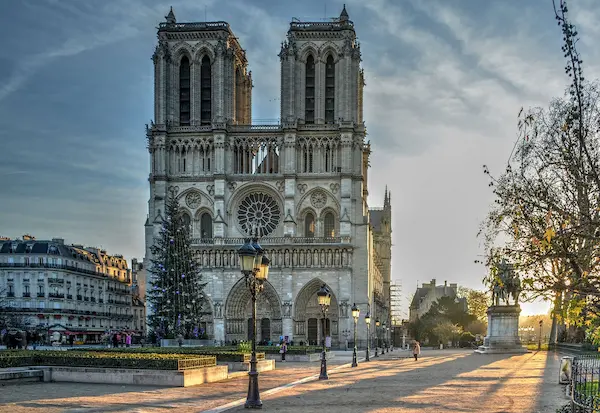
The Notre Dame Cathedral is one of the most famous landmarks in Paris, known for its beautiful Gothic architecture and historical significance. Construction of the cathedral began in 1163 and took over 200 years to complete, It was completed in the 14th century.
The cathedral has been the focus of many important events in French history, including the coronation of Napoleon Bonaparte. It has also suffered damage and destruction over the years, It was damaged during the French Revolution, when much of its religious architecture was destroyed.
In recent years, the cathedral has undergone restoration and renovation projects to preserve its beauty and historical significance. However, in 2019, a devastating fire broke out at the cathedral, causing significant damage to the roof and spire. Efforts to restore the cathedral are ongoing, to reopen it to the public in 2024, during the summer Paris Olympics.
3. Louvre Museum
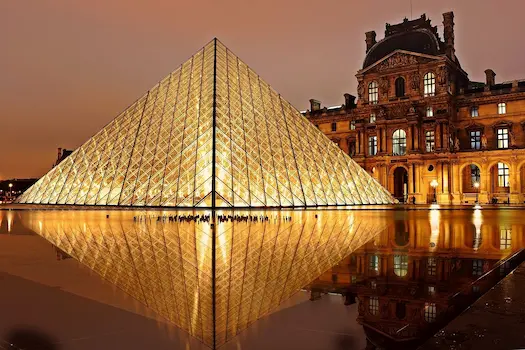
The Louvre Museum is one of the world’s largest and most famous museums, located in the middle of Paris, France. It is housed in a massive complex that was originally constructed as a fortress in the late 12th century. Over the centuries, the building underwent several major renovations and expansions, transforming it into the magnificent museum it is today.
The Louvre has a rich and astonishing history, having served as a royal palace, a museum, and a monument to French art and culture. Its collection of art spans thousands of years, from ancient Egyptian artifacts to contemporary works of art.
Some of the most famous works housed in the Louvre include the Mona Lisa and the Venus de Milo. The museum also features numerous galleries dedicated to specific periods and styles of art, including ancient Greek and Roman art, Islamic art, and European painting from the Middle Ages to the 19th century.
Overall, the Louvre Museum is a must-see destination for tourists interested in art and history, offering a vast glimpse into the rich cultural heritage of France and the world as a whole.
the collection is divided into 8 parts.
Egyptian antiquities
.Oriental antiquities
.Geek, Etruscan and Roman
.Islamic Art
.Sculptures of the middle age
.Object of art
.painting
.Graphic art
4. Champ Elysees
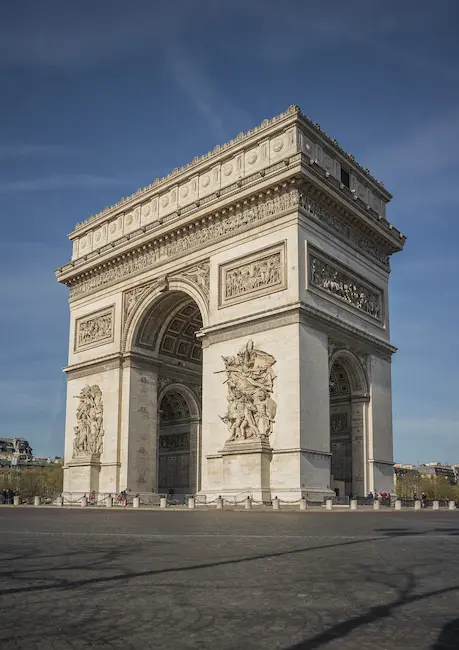
The Avenue des Champs-Élysées is one of the most famous streets in the world, located in the center of Paris, France. It is 1.2 miles from the Arc de Triomphe to the Place de la Concorde and alongside shops, cafes, and theatres.
The avenue was first laid out in the 17th century as an extension of the Tuileries Garden, but it was not until the 19th century that it became the grand, tree-lined boulevard that it is today. The name “Champs-Élysées” translates to “Elysian Fields”, which in Greek mythology was the paradise where heroes went after they died.
The construction of the avenue involved the demolition of several buildings and the creation of a wide, tree-lined boulevard. It was designed to be a grand space for promenading and socializing, and it quickly became a popular destination for the Parisian elite.
5. Cruise on the Seine
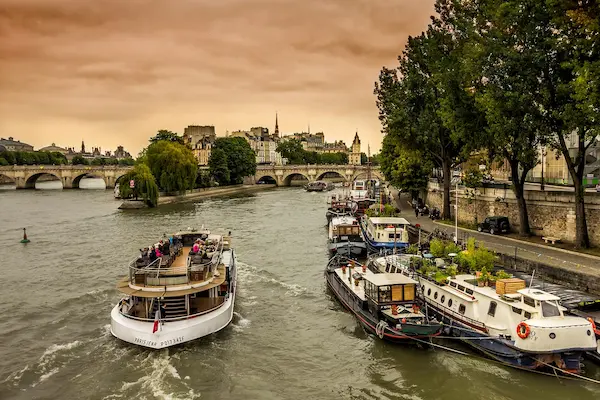
The history of cruising on the Seine dates back to the early 20th century when steamboats were first used to transport passengers and goods along the river. These boats were slow and noisy, but they provided an affordable and efficient means of transportation. In the 1950s, the first pleasure boats were introduced, offering sightseeing tours of Paris from the water. These boats were smaller and more comfortable than the steamboats, and they quickly became popular with tourists.
Today, many companies offer Seine River cruises, ranging from simple sightseeing tours to luxurious dinner cruises. The boats are designed to provide passengers with a comfortable and enjoyable experience, with amenities like open-air decks, panoramic windows, and onboard bars and restaurants.
A cruise on the Seine is a great way to see Paris from a different perspective and to take in the city’s famous landmarks, including the Eiffel Tower, Notre Dame Cathedral, and the Louvre Museum. It’s a must-do activity for anyone visiting Paris.
6. Montmartre

Montmartre is a historic neighborhood located in the northern part of Paris, France. It is known for its bohemian atmosphere and stunning views of the city.
The history of Montmartre dates back to the Roman era, but it was not until the 19th century that it became a popular destination for artists and writers. Many well-known artists, including Pablo Picasso, Vincent van Gogh, and Henri Matisse, lived and worked in Montmartre during this time.
The neighborhood is also home to the Basilica of the Sacre-Coeur, a stunning white church that sits atop a hill overlooking the city. The basilica was built in the late 19th and early 20th centuries as a symbol of national reconciliation following the Franco-Prussian War.
The construction of Montmartre was influenced by the hilly terrain of the area. The neighborhood was built on a series of narrow, winding streets that lead to the top of the hill, offering stunning views of the city below. Many of the buildings in Montmartre are made of stone and feature ornate balconies and ironwork.
Today, Montmartre is a popular destination for tourists, offering a unique blend of history, art, and culture. Visitors can explore the neighborhood’s winding streets, take in the stunning views from the top of the hill, and visit the many cafes, shops, and galleries that line the street.
7. Palace of Versailles

The Palace of Versailles is a famous and opulent royal residence located in Versailles, France. It was built during the 17th century, under the reign of King Louis XIV, also known as the Sun King. The palace was originally a hunting lodge but was later transformed into a magnificent palace and a symbol of royal power.
The construction of the palace began in 1661 and lasted for several decades. The palace was designed by a team of architects, including Louis Le Vaus and Jules Hardin. The gardens were also designed by André Le Notre, a renowned landscape architect.
The palace was built using the finest materials and craftsmanship of the time, including marble, gold, and intricate carvings. It features magnificent halls, including the Hall of Mirrors, which is lined with mirrors and chandeliers and is one of the most famous rooms in the palace.
The Palace of Versailles also includes numerous private apartments, galleries, and chapels, which showcase the opulence and grandeur of the French monarchy. The palace was also home to a vast collection of artwork, including paintings, sculptures, and tapestries.
Today, the Palace of Versailles is a popular tourist destination and a UNESCO World Heritage Site. Visitors can explore the palace’s many rooms and gardens and learn about its fascinating history and significance.
8. The Latin Quarter

The Latin Quarter is a historical and vibrant neighborhood located on the left bank of the Seine River in Paris, France. It is known for its lively atmosphere, bohemian vibe, and rich cultural heritage.
The history of the Latin Quarter can be traced back to the Middle Ages when it was a center of learning and scholarship. The neighborhood was home to the University of Paris, which was founded in the 12th century and was one of the most prestigious universities in Europe.
During the 19th and 20th centuries, the Latin Quarter became a center of artistic and intellectual activity. It was home to many famous artists and writers, including Ernest Hemingway, James Joyce, and Pablo Picasso. The neighborhood’s many cafes, bookstores, and galleries were a hub of creativity and inspiration.
The Latin Quarter’s architecture is also notable, featuring narrow streets, cobblestone alleys, and historic buildings with intricate façades. The neighborhood is also home to several famous landmarks, including the Sorbonne University and the Pantheon, which is a mausoleum that houses the remains of many famous French figures, including Voltaire and Victor Hugo.
Today, the Latin Quarter remains a popular destination for tourists and locals alike. Visitors can explore the neighborhood’s many attractions, including its museums, galleries, and cafes. They can also stroll along its charming streets, take in its vibrant atmosphere, and learn about its fascinating history and cultural significance.
9. Moulin Rouge

The Moulin Rouge is a famous lounge located in the Montmartre neighborhood of Paris, France. It is known for its colorful history, extravagant shows, and iconic windmill.
The Moulin Rouge was built in 1889 by Joseph Oller and Charles, who were both showmen and entrepreneurs. The cabaret was originally a place where wealthy patrons could enjoy champagne and entertainment performed by a troupe of dancers and performers.
The Moulin Rouge quickly became famous for its extravagant shows, which featured elaborate costumes, music, and dance routines. It also became known for its can-can dancers, who became the symbol of the cabaret and the city of Paris.
Over the years, the Moulin Rouge has undergone several renovations and changes of ownership. It has also had its ups and downs, experiencing periods of decline as well as resurgence. However, it has always remained a symbol of Parisian nightlife and entertainment.
Today, visitors can enjoy shows at the Moulin Rouge, which still features the iconic windmill and colorful façade. The shows continue to feature music, dance, and acrobatics, as well as the famous can-can dance. The Moulin Rouge remains a popular tourist attraction and a symbol of the vibrant nightlife and culture of Paris.
10. Disneyland Paris
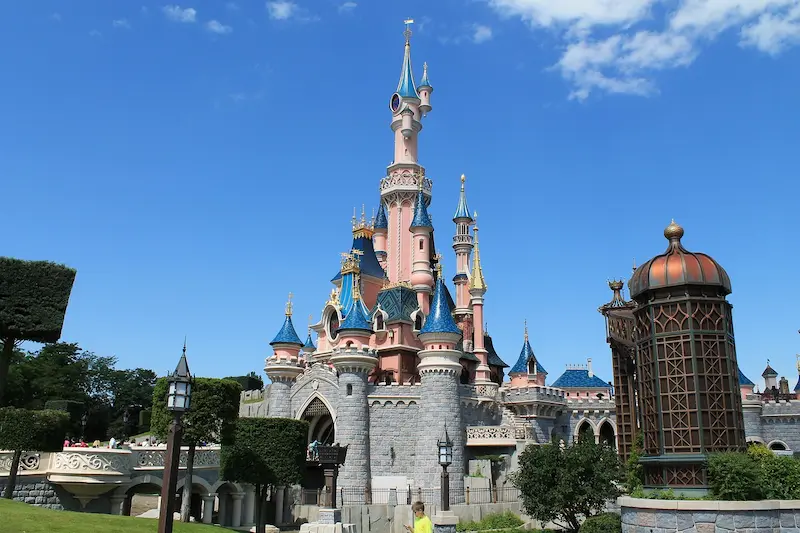
Disneyland Paris is an entertainment resort located in Marne-la-Vallee, a suburb of Paris, France. It is a theme park and resort complex that was opened in 1992, and it has since become one of the most popular tourist destinations in Europe.
The idea of Disneyland Paris was first conceived by Walt Disney in the 1950s, but it was not until the 1980s that plans for the park began to take shape. The park was designed to be a replica of the original Disneyland in California but with a European twist.
Construction of the park began in 1988 and took several years to complete. The park covers an area of over 4,800 acres and includes two theme parks, Disneyland Park and Walt Disney Studios Park, as well as several hotels, restaurants, and shopping areas.
Disneyland Paris features many of the same attractions as the original Disneyland park, including iconic rides like Space Mountain, Big Thunder Mountain Railroad, and It’s a Small World.

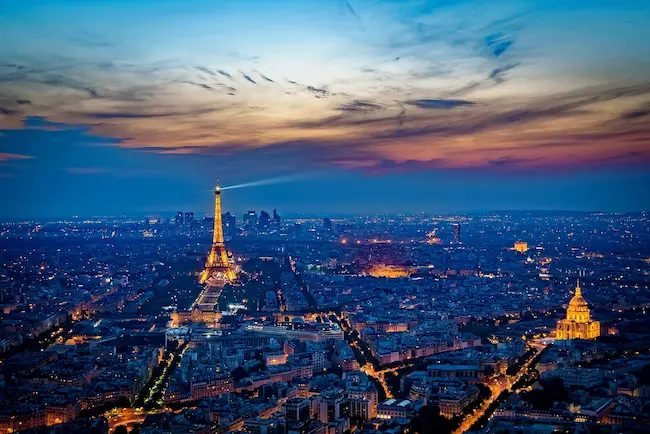
3 thoughts on “Top 10 Tourist Attractions in Paris// Famous Places To visit”